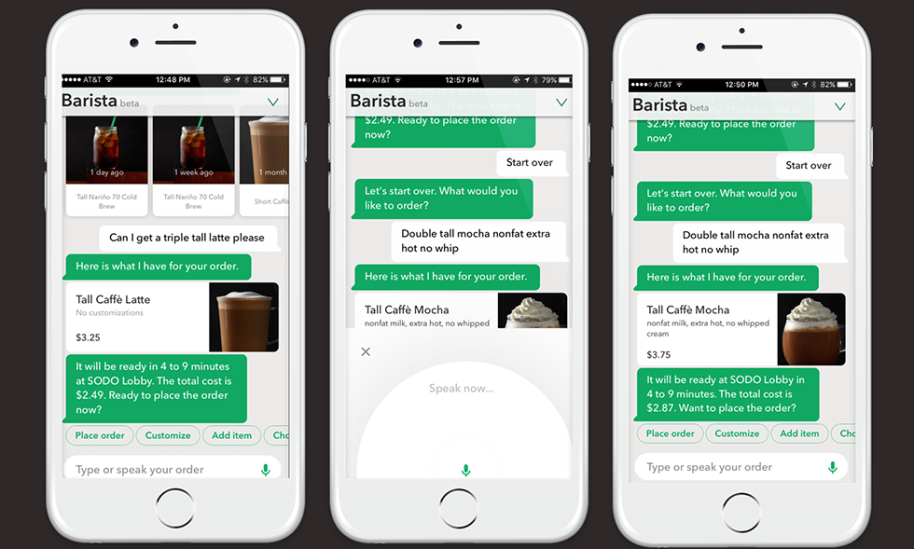

What is C-commerce or Conversational Commerce?
In the last decade, electronic commerce has grown exponentially as a result of the digital transformation process.
According to Statista, in 2021, online sales amounted to approximately 4.9 trillion US dollars, 17% more than in 2020 and 48% more than in 2019. This same report predicts that this figure will grow by 50% in the next four years, reaching about 7.4 trillion dollars by 2025.
As we can see, today most sales are made electronically. As a consequence, the number of companies offering their products online is greater and, therefore, the competition between them.
C-commerce or conversational commerce was born as the evolution of e-commerce to adapt to the demand for more effective and dynamic electronic commerce.
This way, consumers who want to interact with the company do not need to visit the physical store, but the main sales channel is messaging applications such as WhatsApp, chatbots or voice assistants.
What is c-commerce?
C-commerce (or conversational commerce) is a business model in which the buying or selling process is carried out through instant messaging applications, chats or voice assistants.
The term was first mentioned in 2015 by Chris Messina, a former Uber worker and creator of the term “hashtag”. In it, Messina refers to the tendency to interact with companies through messaging applications or voice technology to define c-commerce.
The main characteristic of these apps is that they allow consumers to connect with companies virtually and in real-time. In addition to facilitating and personalizing the purchase process, they can serve as a communication channel to build customer loyalty.
Types of Conversational Commerce
Here are the four most popular types of conversational commerce:
-
Messaging Apps
Messaging applications such as WhatsApp, Facebook Messenger, Instagram Direct or WeChat were created to connect users. With the evolution of electronic commerce, these apps have become a great communication channel between consumers and brands.
Although the main use for brands is customer service, it is increasingly common to send sales offers or brand communications through these channels.
Facebook Shops is the most used platform, allowing brands to connect with potential customers through Messenger, WhatsApp or Instagram Direct.
-
Live Chat
Live chats are chats that brands make available to customers to facilitate communication. These chats can usually be accessed through the brand’s website or app.
The younger generations, used to text messages and not calls, are the main users of live chats.
Live chats allow the user to communicate with an agent virtually and in real-time. This way, communication is from person to person, and not from person to robot. Live chats allow the resolution of incidents, doubts and open up-selling and cross-selling opportunities.
-
Chatbots
Chatbots are like live chats, but instead of interacting with an agent, you interact with a robot. These bots are configured to be able to automatically respond to any question or comment from users, so Artificial Intelligence is key.
Chatbots are then much less expensive than live chats. However, it must be configured with the utmost precision in order not to generate a dissatisfaction feeling to the customer.
-
Voice Assistants
Voice assistants, such as Apple’s Siri or Amazon’s Alexa, have grown significantly in popularity. By 2022, voice-based purchases are projected to reach to $40 billion.
Voice Assistants allow you to answer any user question and therefore offer products or services in the query’s results. Undoubtedly, SEO positioning in voice searches is a key factor in reinforcing a brand’s c-commerce.
Benefits of Conversational Commerce
The benefits of applying c-commerce in a business are multiple. These are some of the most important:
- Improve the user experience
- Real-time and instant interaction
- Personalization of electronic sales
- New leads generation
- Up-selling and cross-selling opportunities
- Loyalty of current customers
- Reduction of the cart abandonment rate
- Cost reduction for the company
C-commerce stages
C-commerce can be applied in all phases of the Customer Journey Map:
-
Awareness stage
This is the stage in which the user realizes that he has a need and starts looking for solutions. At this stage it is essential that you optimize the SEO of the conversational commerce tools that you use so that users find you.
-
Consideration stage
Here the user has found your brand and has decided to take it into account as a possible purchase option. This is the time to provide him with as much information as possible so that he can decide for you, without being intrusive. Promote the use of live chat or chatbot to facilitate the resolution of doubts.
-
Decision stage
At this stage the client already has all the information and makes a decision. Make the purchase process as agile as possible and always keep the possibility of interacting with the brand to clarify doubts or additional incidents.
-
Loyalty stage
The client is already yours but you must continue working on the relationship so that he continues to choose you. Inform your customers of new products, benefits, order tracking, in real time to build loyalty. The role of instant messaging is key at this stage.
Real cases
These are some of the brands recognized for their c-commerce strategy:
-
Starbucks
Starbucks allows its users to request their order in advance, avoiding queues, through a chatbot only available in its app. In addition, you can order it by sending a voice message.
-
KLM Royal Dutch Airlines
The airline uses WhatsApp Business to send customers important information and updates about their travel details.

-
H&M
The brand of clothing and accessories for the home has a chat on its website and application to answer customer questions, incidents and even help you find a product.

-
DOMINO’s
Did you know that by adding a pizza emoji to a tweet you can order a pizza? This is the perfect example of how to build customer loyalty, in a simple and fast way.




